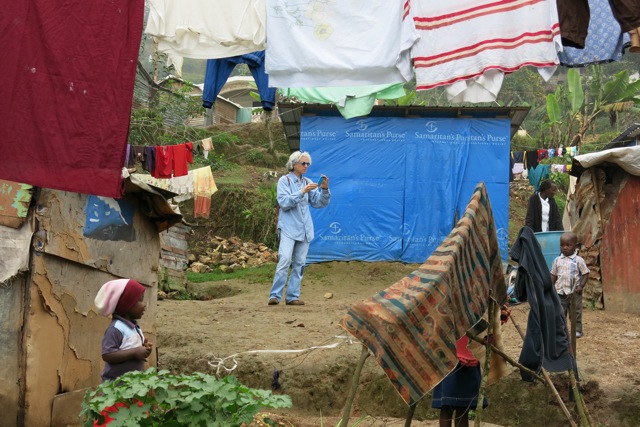
A drummer starts the beat. In a school playground, the teenage youths break into a dance. Several dozen of 6-14 year-olds can’t take their eyes off them and they are about to join in. It’s a dance class. The teenage instructors don’t take showing their moves lightly and the youngsters try hard. They repeat the dance several times together; then the instructors leave and the little ones do it themselves. Then clapping and shouting and laughter. A sense of accomplishment. A minute later all of them are running around playing ball. Joy.
If you knew that the little ones come from local orphanages and tent villages (where many people still live after they lost their homes during the 2010 Haiti earthquake), you would have even greater appreciation for this scene. And even more so if you saw what I saw during my trip to Haiti.
We visited an orphanage, a rehabilitation center for malnourished children, a ward for abandoned kids in a Port Au Prince pediatric hospital and a tent village in Kenscoff. The big brown eyes will be following me for a long time – some of them full of tears and they cry; others full of sadness and they stare; the most heartbreaking are the blank ones: they don’t see you.
There were moments when I felt helplessness and despair. In one orphanage I wished I had more arms so I could hold more than two babies. But I just had two arms and I would leave in an hour. It became clear — money, supplies and good people are not enough. It all has to be applied thoughtfully and deliberately to transform communities in a way that they can start taking care of themselves.
In Kenscoff, a mountain town about 10 miles south of Port Au Prince, Worldwide Orphans Foundation (WWO) took on that kind of a transformation. Partnering with local government and a community center, WWO serves four orphanages and a tent village to provide programs that allow for children’s growth. If kids don’t get what they need for their development at the time they ought to, they leg behind and it’s harder or impossible to catch up.
With one exception for the program coordinator Melissa Willock, the WWO programs are run by local staff that is trained by WWO. All programs reach deeply into communities, engaging and educating volunteers to be a part of the solution. In Haiti teenage youths partner one-on-one with at risk kids, teach classes and serve as counselors in camps. It is win-win for community: the little ones get playmates and the older ones learn to contribute and be leaders. That is sustainable.
In the dance class, I watched a four-year-old girl with thin legs and awkward posture. She kept her eyes on the instructors, carefully trying to catch the moves and not always succeeding. When she finished her dance routine with a victory clap, she smiled. That might’ve been the only time in the day when she got to be a kid. And that joyful smile Haitians are famous for is what WWO does in the world.

Jane Aronson, the founder of WWO in a tent village Kinscoff, Haiti